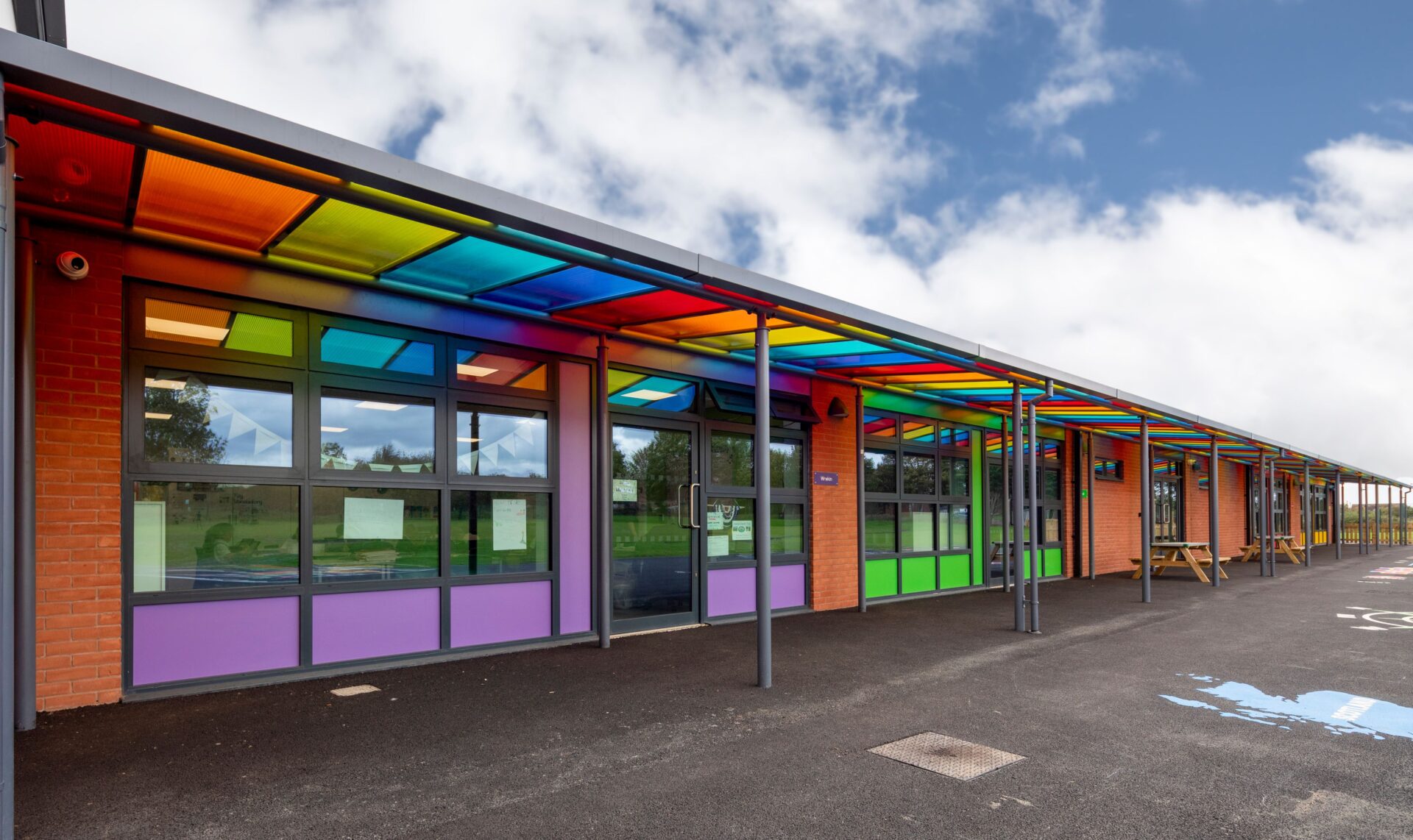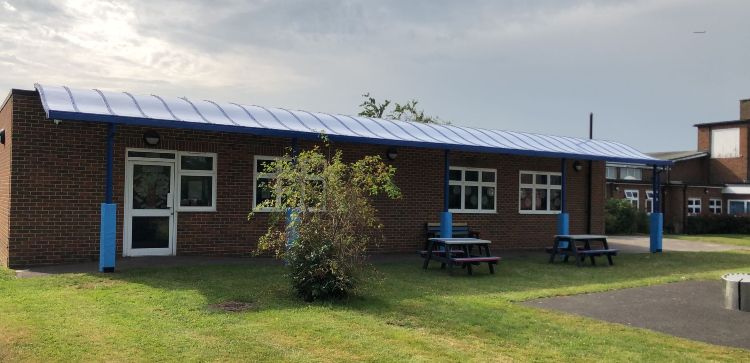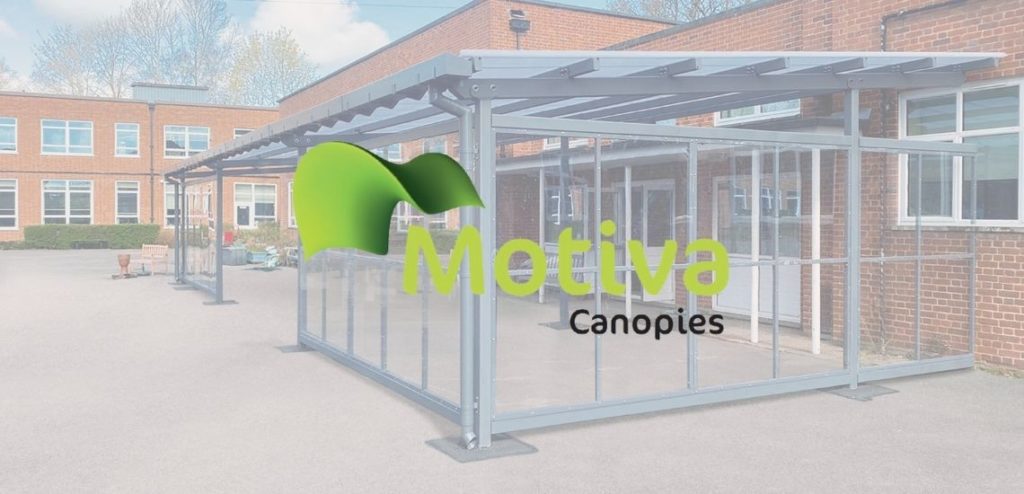The way you design your EYFS outdoor area makes a huge difference to children’s development. It’s where they improve their social skills and motor skills, expand their imagination and explore the world around them.
This blog explores 2024’s top playground designs, with case studies and visuals of projects we’ve assisted.
At A&S Landscape, we specialise in manufacturing canopies for nurseries and schools. If you’re an early years provider looking to enhance your outdoor area, our team is ready to assist.
Request your FREE consultation and design online today, we’re happy to help.
What makes a good EYFS outdoor learning environment?
Designing an outdoor area for Early Years Foundation Stage (EYFS) children involves complying with legal obligations set by OFSTED and health and safety laws.
Despite these regulations, there are many different approaches to creating a safe and fun playground, fostering the happiness and inspiration of young learners.
So, what should an early education playground include to engage children?
- Nursery settings should provide an inclusive environment, accommodating wheelchair space, sensory elements, seating areas and stable surfaces.
- Playground shelters provide coverage from harsh rays and rain throughout the year.
- Access to water sources for constant hydration.
- Storage space for additional toys and equipment.
- Like an indoor educational setting, your outdoor area should be secure and well-arranged, allowing for planned activities and space for free play.
- Play materials and resources to encourage creativity.
- Regular health and safety and risk assessment checks of area and equipment.
5 Outdoor Area Ideas for Early Years Education
From vibrant school canopies and early years settings to specialist playground equipment, robust rubber flooring, and secure fencing, each aspect plays a role in creating an EYFS playground where pupils can laugh, play and thrive.
If you’re looking for ideas for a brand-new playground renovation, our team is here to guide you with innovative ideas and solutions tailored to your vision and needs.
For now, enjoy the following ideas!
Covering EYFS outdoor areas with quality canopies
Structural aesthetics and bold, bright colours go a long way in promoting learning. Having a robust, attractive and protective playground canopy helps to promote physical development and encourage outdoor play.
Installing a canopy means providing shelter for children to continue playing outdoors, even when it’s raining.
Here are just a few shelter and canopy options you could consider:
- Colourful polycarbonate shelters are added for added aesthetic appeal but also provide reliable coverage for children and parents during drop off and pick up.
- Shade sails are a good way of keeping the rays off of little faces, which means children can play comfortably. They come in a multitude of colours, making your establishment both functional and beautiful.
- Pram shelters are a brilliant addition to any nursery setting. Having one of these in place provides easy access and storage.
- Large tepees are a great solution for small areas that require full coverage.. They’re waterproof, wind-safe and fire retardant, meeting all safety requirements.
Sensory gardens
A sensory garden is a purposefully designed outdoor space featuring a variety of plants, ornaments, signposts, and insect houses. They’re built for both educational and sensory purposes, inspiring children to interact with nature and begin exploring their five senses. For EYFS children, sensory gardens are a great way to introduce them to the world of nature and begin teaching children about flower names.
Sensory gardens also serve as an inclusive educational resource, especially for children with special educational needs.
Recycled play equipment
Introducing recycled play equipment to nursery environments is not only a sustainable choice, but also offers numerous benefits for children’s development. Gathering items such as empty milk cartons, recycled boxes, and crates repurposes waste and also provides a unique and eco-friendly play experience.
These items are usually familiar household items, helping children learn how to use everyday items. This contributes to their creativity and enhances problem-solving skills. Plus, it teaches the importance of recycling at a young age!
Enclosed spaces
While early education is all about teaching children social skills and the principle of teamwork and playing together, private space is equally important.
Many young children are attracted to the prospect of ‘alone time’ and hiding out in enclosed spaces. Helping kids feel a sense of privacy lets them withdraw away from their friends and enjoy time to observe what’s happening around them alone.
Installing play equipment like playhouses, reading nooks, tents and den-style spaces makes an EYFS playground inclusive for all.
Construction area
Construction is a learning activity often carried out from EYFS to the senior years of school, taking many different formats. At EYFS level, reception and nursery children particularly enjoy participating in building games.
Dedicating a space in your playground to a mini construction site comes with many benefits:
- It enables children to experiment with different materials
- Building blocks, gravel and toy cars improve fine motor skills
- Open areas with construction materials encourage problem-solving and cognitive development
- It lays the foundation for fundamental concepts surrounding engineering and physics
If this sounds like something your nursery could benefit from, try to gather recycled materials such as old tyres, wooden planks, stones and palettes. This is an extremely cost-effective way to make your playground fun and exciting.
Outdoor maths
Maths is a subject taught from a very early age, and there are ways to introduce numbers engagingly. Outside of the classroom itself, outdoor maths is a valuable aspect of a child’s early education.
Some examples of designs and activities you can incorporate into your outdoor space include:
- Mud kitchen: With a mud kitchen, kids are encouraged to measure, tip and pour quantities of mud and water. It’s an opportunity to play with capacity and volume, meaning they’re participating in mathematics without even noticing.
- Obstacle courses: Toddler-friendly obstacle courses often include numbered objects that encourage children to count as they navigate the course. Maths also comes into play when teachers use timers, point systems and tiered systems (who came in 1st place, 2nd place, etc.).
- Hopscotch: A classic game of hopscotch never goes out of fashion. The numbered squares painted on the ground are a fantastic way of introducing children to the shapes or numbers, helping them to understand patterns and number formation.
Inspire play and learning: Transform your early years outdoor area with A&S Landscape
Now that you have a list of unique and interesting ideas for your early years establishment, it’s time to put plans into action.
Speak to a member of our team for any additional advice or inspiration. We’re here to provide you with designs and sketches tailored to your specific requirements, ensuring your outdoor area becomes a source of inspiration and joy for both educators and children alike.


